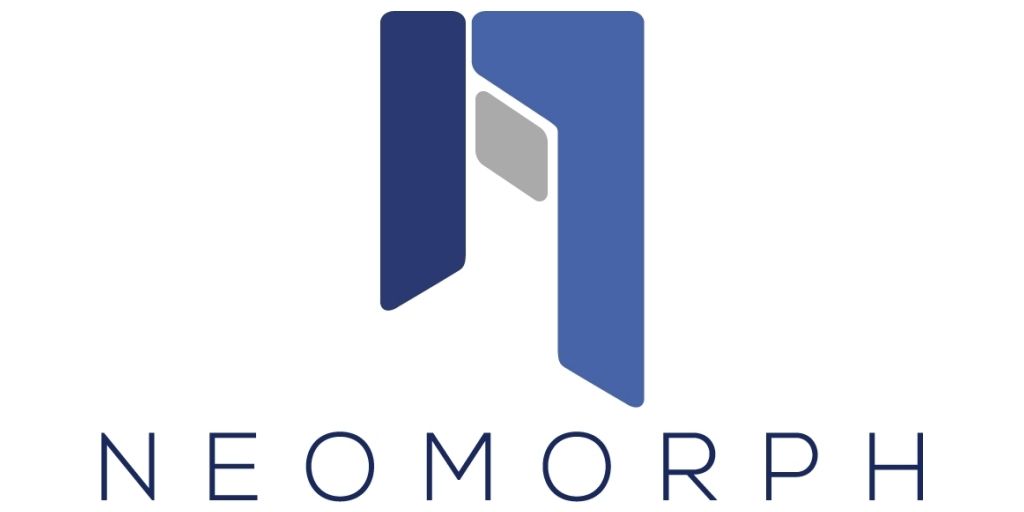预约演示
更新于:2025-05-07

Neomorph, Inc.
更新于:2025-05-07
概览
标签
肿瘤
小分子化药
疾病领域得分
一眼洞穿机构专注的疾病领域
暂无数据
技术平台
公司药物应用最多的技术
暂无数据
靶点
公司最常开发的靶点
暂无数据
| 疾病领域 | 数量 |
|---|---|
| 肿瘤 | 2 |
| 排名前五的药物类型 | 数量 |
|---|---|
| 小分子化药 | 2 |
| 排名前五的靶点 | 数量 |
|---|---|
| IKZF2(锌指蛋白helios) | 2 |
关联
2
项与 Neomorph, Inc. 相关的药物US20240239785
专利挖掘靶点 |
作用机制- |
在研机构 |
原研机构 |
在研适应症 |
非在研适应症- |
最高研发阶段药物发现 |
首次获批国家/地区- |
首次获批日期- |
US20240034723
专利挖掘靶点 |
作用机制- |
原研机构 |
在研适应症 |
非在研适应症- |
最高研发阶段药物发现 |
首次获批国家/地区- |
首次获批日期- |
100 项与 Neomorph, Inc. 相关的临床结果
登录后查看更多信息
0 项与 Neomorph, Inc. 相关的专利(医药)
登录后查看更多信息
5
项与 Neomorph, Inc. 相关的文献(医药)2025-01-01·Nature Chemical Biology
Targeted protein degradation comes of age
Article
作者: Matyskiela, Mary E
2025-01-01·Toxicologic Pathology
Trends and Challenges of the Modern Pathology Laboratory for Biopharmaceutical Research Excellence
Review
作者: Clark, Elizabeth ; Mohanan, Sunish ; Carreira, Vinicius ; Bangari, Dinesh S. ; Sisó, Sílvia ; Couto, Suzana ; Marella, Mathiew ; Morel, Caroline ; Stierstorfer, Birgit ; Schwartz, Annette ; Kavirayani, Anoop Murthy
2021-03-04·Annual Review of Cancer Biology
Small-Molecule Approaches to Targeted Protein Degradation
作者: Yue, Hong ; Donovan, Katherine A. ; Faust, Tyler B. ; Chamberlain, Philip P. ; Fischer, Eric S.
111
项与 Neomorph, Inc. 相关的新闻(医药)2025-05-05
Deerfield Management is back with its third healthcare venture fund, this time securing more than $600 million to create new drug development outfits, medical technology startups and adjacent computational software companies.
That’s five years after its
$840 million
venture fund was announced in 2020.
Deerfield Healthcare Innovations Fund III will help support the firm’s in-house drug discovery and medical technology teams in New York City at the 12-story Cure campus. Its sprawling ecosystem encompasses 29 research institution collaborations, including a
10-year deal
with the University of Chicago announced earlier this year.
The fund adds to the pool of capital available to the life sciences community, which is sorely in need of bright spots after a multiyear downturn. Other investment firms have disclosed new funds this year, including
Aditum Bio
,
Curie.Bio
and a16z’s new fund
backed by Eli Lilly
.
Deerfield has about 25 drugs in development and is currently invested in about 150 companies, managing partner James Flynn told
Endpoints News
.
Recently departed Sanofi CSO Frank Nestle is CEO of Deerfield Discovery and Development, which is the internal team that works to take experimental drugs and devices to key inflection points within about three or four years before packaging them into new companies, Flynn said.
Overall, Deerfield has about $15 billion in assets under management, Flynn said. That includes three buckets: a public fund, a fund dedicated to private investing with an emphasis on structured finance, and then the Healthcare Innovations unit, which focuses on launching burgeoning companies, the managing partner added.
The firm’s portfolio includes companies like Nuvalent and Neomorph.
Nuvalent started as an idea out of Harvard University to create drugs for treatment-resistant cancers. Deerfield seeded the company and then wholly contributed to a $50 million Series A in 2021. It quickly went public via an IPO later that year and today is a $5.5 billion drug developer, by market capitalization.
However, the industry is currently weathering one of the longest dry spells for biotech initial public offerings in Flynn’s three-plus-decade career in healthcare investing. That’s pressuring earlier-stage companies, especially private startups looking to pull together syndicates.
Neomorph is an example of one of those companies that is trying to drum up investor support but is finding it difficult, even with broad pipelines and multiple industry partnerships. The fledgling company was born out of Deerfield’s work with Dana-Farber and their
collaboration
on the Center for Protein Degradation. The San Diego biotech has signed pharma tie-ups with AbbVie, Biogen and Novo Nordisk in the past 16 months, but it’s “hard to do a syndicated round right now,” Flynn said.
The firm has also invested in gene therapy outfits, like Chicago-area Jaguar Gene Therapy, which recently
entered
the clinic with an investigational medicine for a genetic form of autism. But Deerfield is taking a “very careful” approach to the field right now because it’s been “exceptionally difficult to get gene therapy companies funded,” Flynn said.
“I do think the new FDA is whispering encouraging things relative to products targeting smaller markets, and they seem to be very open to surrogates, even novel surrogates,” Flynn said. “We do have some rare disease companies right now that are getting that kind of feedback about their products.”
Deerfield’s fund will also place an emphasis on software companies in the healthcare field.
The firm will about double its software team this year, from 15 people to more than 30, Flynn said. It includes a computational chemistry group that has helped form companies like Excelsior Sciences, which is a mixture of medical technology, software and a drug discovery platform that has been in development for nearly three years, he said.
IPO
2025-04-25
One quarter after AbbVie raised
future sales estimates
due to the successes of its immunology portfolio, the company again saw higher-than-expected revenues to start 2025.
AbbVie’s overall revenues for the first quarter totaled $13.3 billion, coming in about $550 million ahead of its estimates and at an 8.4% increase over the same period last year. Immunology drugs contributed to almost half of that, totaling about $6.3 billion for the quarter.
The company also raised its earnings per share forecast for 2025, up to $12.09 to $12.29 from a previous range of $11.99 to $12.19.
The megablockbuster drugs Skyrizi and Rinvoq also combined for more than $5 billion in sales, with about $3.4 billion for Skyrizi and $1.7 billion for Rinvoq. The drugs’ revenues grew by 70.5% and 57.2% over the first quarter of 2024, respectively, continuing their
tandem ascent
to replace the former cash cow Humira.
Humira sales fell more than 50% from last year’s first quarter, tallying about $1.1 billion in sales through the first three months this year.
Friday’s earnings come as AbbVie has been busy on the dealmaking front in recent months, getting into the obesity race in March with a
$350 million upfront deal
for Gubra’s long-acting amylin analog. AbbVie also partnered with
Neomorph in January
for the hot molecular glue field as well as with
Xilio in February
in the T cell engager space.
The uptick in deals may help prove a counterweight to the nearly $9 billion acquisition of Cerevel, whose centerpiece drug — a schizophrenia program called emraclidine with a similar mechanism to the recently-approved Cobenfy — failed
two mid-stage trials
last November. AbbVie took a
$3.5 billion write-down
on the acquisition and is still deliberating internally on how to best advance emraclidine in other settings.
并购上市批准生物类似药IPO
2025-02-28
In a new deal with Eli Lilly, Magnet Biomedicine will receive up to $40 million upfront, and it could earn more than $1.25 billion in tiered royalties and milestone payments.\n The molecular glue wave that first began years ago is still swelling, with Eli Lilly earmarking approximately $1.25 billion to develop new versions of the sticky molecules in collaboration with Magnet Biomedicine.Under the terms of the agreement, Magnet will receive up to $40 million in upfront, near-term payments and an equity investment, the partners announced in a Feb. 28 release. In total, the Boston-based precision medicine firm can potentially earn more than $1.25 billion, including tiered royalties and milestone payments if certain development, regulatory and commercial goals are met through the collaboration.Focusing on oncology applications, the team will use Magnet’s platform—called TrueGlue—to discover new molecular glues for development and potential commercialization.\"This collaboration supports our differentiated approach and efforts to reimagine what’s achievable through the next generation of molecular glues to drive breakthrough therapies,” Magnet CEO Brian Safina, Ph.D., said in the release. \"Lilly’s commitment to innovation and deep expertise in bringing transformative medicines to patients make it an ideal partner for Magnet as we harness the untapped potential of molecular glues.”Magnet identifies molecular glues by screening a proprietary chemical library, according to the release. These molecules bring targeted proteins together and induce them to interact, most commonly as a way to condemn disease-causing proteins to destruction by way of protein degradation machinery in cells.Lilly inked a deal in 2021 with exactly that protein-destroying goal in mind, promising potentially more than $1.6 billion to Lycia Therapeutics to find molecular glues for difficult targets in immunology and pain. That deal followed earlier interest in molecular glues by the Big Pharma, including a research collaboration with BeyondSpring subsidiary Seed Therapeutics and an investment in protein degrader Kymera Therapeutics. Other pharmas have also put big money into the glue game. In 2024, Eisai signed its own Seed pact worth up to $1.5 billion to go after neurodegeneration and oncology targets.And, just last month, AbbVie offered up to $1.64 billion to Big Pharma darling Neomorph, a molecular glue specialist that has also signed billion-dollar pacts with Biogen and Novo Nordisk.Magnet emerged in 2023 with a $50 million series A backed by Newpath Partners and Arch Venture Partners. It counts Nobel Prize winner Michael Rosbash, Ph.D., as one of its founders.Editor\'s note: A previous version of this story incorrectly stated the total potential value of the deal. The story was updated at 11:45 a.m. ET to reflect the correct value.

引进/卖出
100 项与 Neomorph, Inc. 相关的药物交易
登录后查看更多信息
100 项与 Neomorph, Inc. 相关的转化医学
登录后查看更多信息
组织架构
使用我们的机构树数据加速您的研究。
登录
或

管线布局
2025年11月11日管线快照
管线布局中药物为当前组织机构及其子机构作为药物机构进行统计,早期临床1期并入临床1期,临床1/2期并入临床2期,临床2/3期并入临床3期
药物发现
2
登录后查看更多信息
当前项目
| 药物(靶点) | 适应症 | 全球最高研发状态 |
|---|---|---|
US20240034723 ( IKZF2 ) | 肿瘤 更多 | 药物发现 |
US20240239785 ( IKZF2 ) | 肿瘤 更多 | 药物发现 |
登录后查看更多信息
药物交易
使用我们的药物交易数据加速您的研究。
登录
或

转化医学
使用我们的转化医学数据加速您的研究。
登录
或

营收
使用 Synapse 探索超过 36 万个组织的财务状况。
登录
或

科研基金(NIH)
访问超过 200 万项资助和基金信息,以提升您的研究之旅。
登录
或

投资
深入了解从初创企业到成熟企业的最新公司投资动态。
登录
或

融资
发掘融资趋势以验证和推进您的投资机会。
登录
或

生物医药百科问答
全新生物医药AI Agent 覆盖科研全链路,让突破性发现快人一步
立即开始免费试用!
智慧芽新药情报库是智慧芽专为生命科学人士构建的基于AI的创新药情报平台,助您全方位提升您的研发与决策效率。
立即开始数据试用!
智慧芽新药库数据也通过智慧芽数据服务平台,以API或者数据包形式对外开放,助您更加充分利用智慧芽新药情报信息。
生物序列数据库
生物药研发创新
免费使用
化学结构数据库
小分子化药研发创新
免费使用
